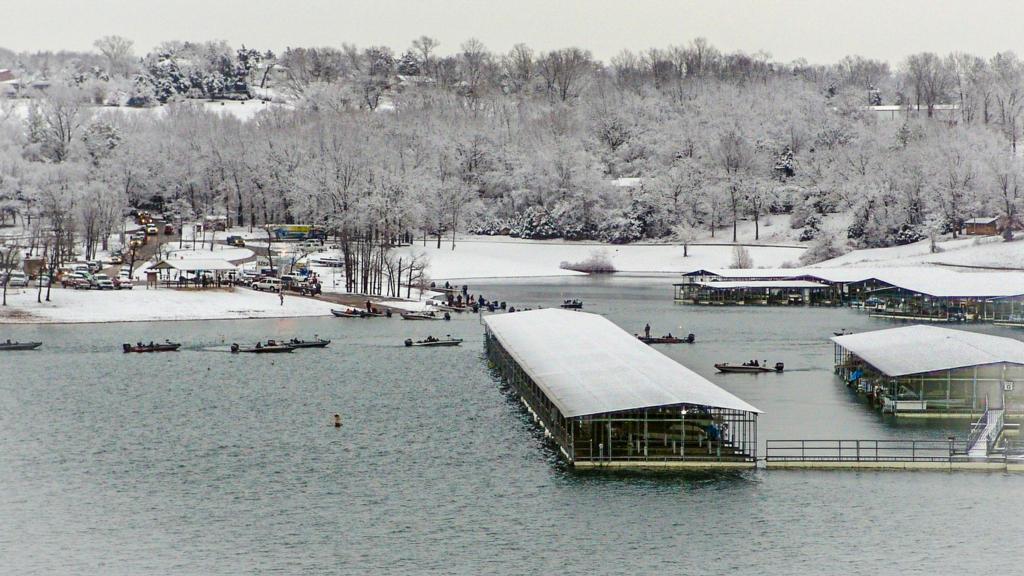5 Winter Fishing Safety Tips
How Cody Kelley limits risk in adverse conditions

(The writer's opinions and observations expressed here are his own, and do not necessarily reflect or represent the views, policies or positions of FLW.)
For a lot of people, winter is the time of year when they begin to slow down on their hunting efforts. The boat and tackle have been left in the garage for several months and seemingly are starting to beg for a little bit of attention. Weekly airings of FLW events on NBC Sports do nothing but increase the urge to get back on the water.
And as many anglers already know, the winter months can yield some of the year’s best chances at a true trophy-sized bass, without having to deal with the fishing and boating pressure that lakes encounter in spring and summer. It’s just you, the lake and (hopefully) the fish.
However, when it comes to wintertime bass fishing, there’s more that should be on anglers’ minds that just how to fool lethargic cold-water bass.
With cold weather comes increased danger, whether it’s the risk of hypothermia or drowning in the event of a fall overboard. Obviously, this isn’t the thing that most people want to talk about, but it’s something that everyone should take seriously. Cold-weather fishing requires wearing heavier clothing that offers a limited range of motion. Plus, you can quickly find yourself in the water due to a misstep on the deck of a frosty bass boat.
Here’s a quick list of five things that I like to do to ensure a safe and fun winter bass trip.
1. ALWAYS carry a change of clothes. In the event that you do go in, you are going to want to get out of your wet clothes quickly. I don’t go crazy with this. Just a pair of thick insulated underwear, wool socks and an extra hat/head covering of some sort will do. If you have extra rain gear, bring it too. After drying off and changing clothes, wear the rain gear to help cut the wind and keep you warm while you make your way back to the ramp. Also, know how you’ll get back in the boat. Some boats have built-in ladders. If yours doesn’t, you can stand on the cavitation plate on the outboard and trim up the motor to lift yourself up high enough to crawl onto the back deck.
2. Bring a towel. I guess you could roll around on the boat carpet to dry yourself off, but I prefer this method!
3. Prepare a safety kit in a 1-gallon plastic zippered bag with the following items: waterproof matches, gloves, a small piece of a fire starter log and a space blanket.
4. Let someone know where you will be fishing, and keep your cellphone in a dry place so you’ll have it if you need to call for help.
5. The best way to avoid a tragedy on the water is to wear a personal floatation device (PFD). Always wear it while operating the outboard, and anytime the weather is cold. Self-inflating models are more comfortable to wear over coats and won’t limit your movement while fishing.
Everything’s easier and safer in winter if you fish with a friend, too, so keep that in mind, especially if you’re fishing in areas with limited cell service or on ramps that might be hard to access during a winter drawdown – there’s no reason to get wet from the start while launching a boat solo at a shallow ramp. You might also want to bring salt, which is really nice to have when it’s time to load out at an icy ramp.
I know these emergency items might seem a bit extreme for a day on the lake. However, if you are on a body of water that isn’t surrounded with boat docks, but rather forests (such as Lake Ouachita), it could really come in handy. There are places on many lakes that don’t have cellular service, so a quick phone call for help might not be an option. It only takes a few minutes to pack this stuff up and takes up almost no room in the boat. And this is the time of year that it can be very important.
Until next time, I hope every one of you had a Merry Christmas and catches the big fish you’re after.